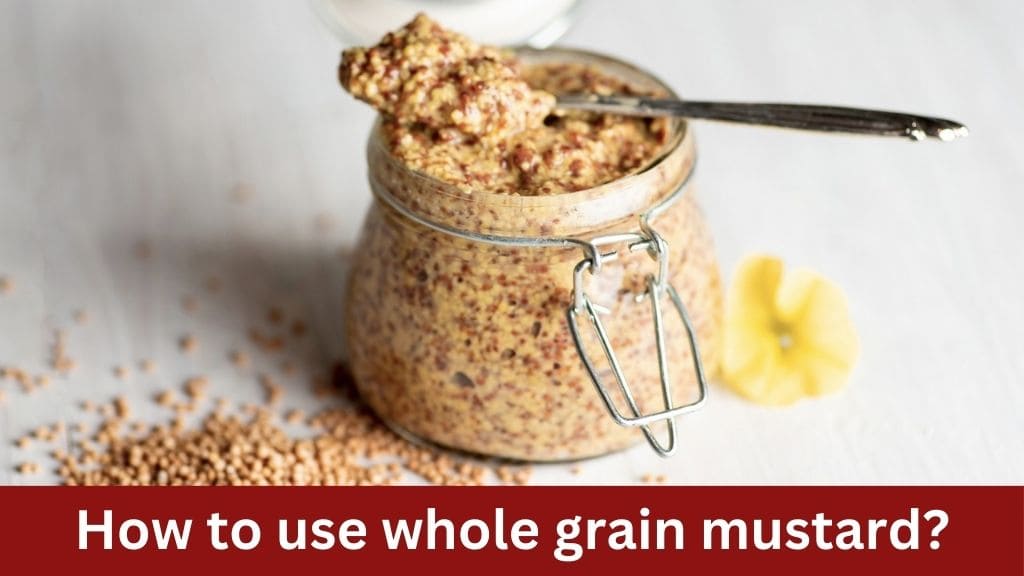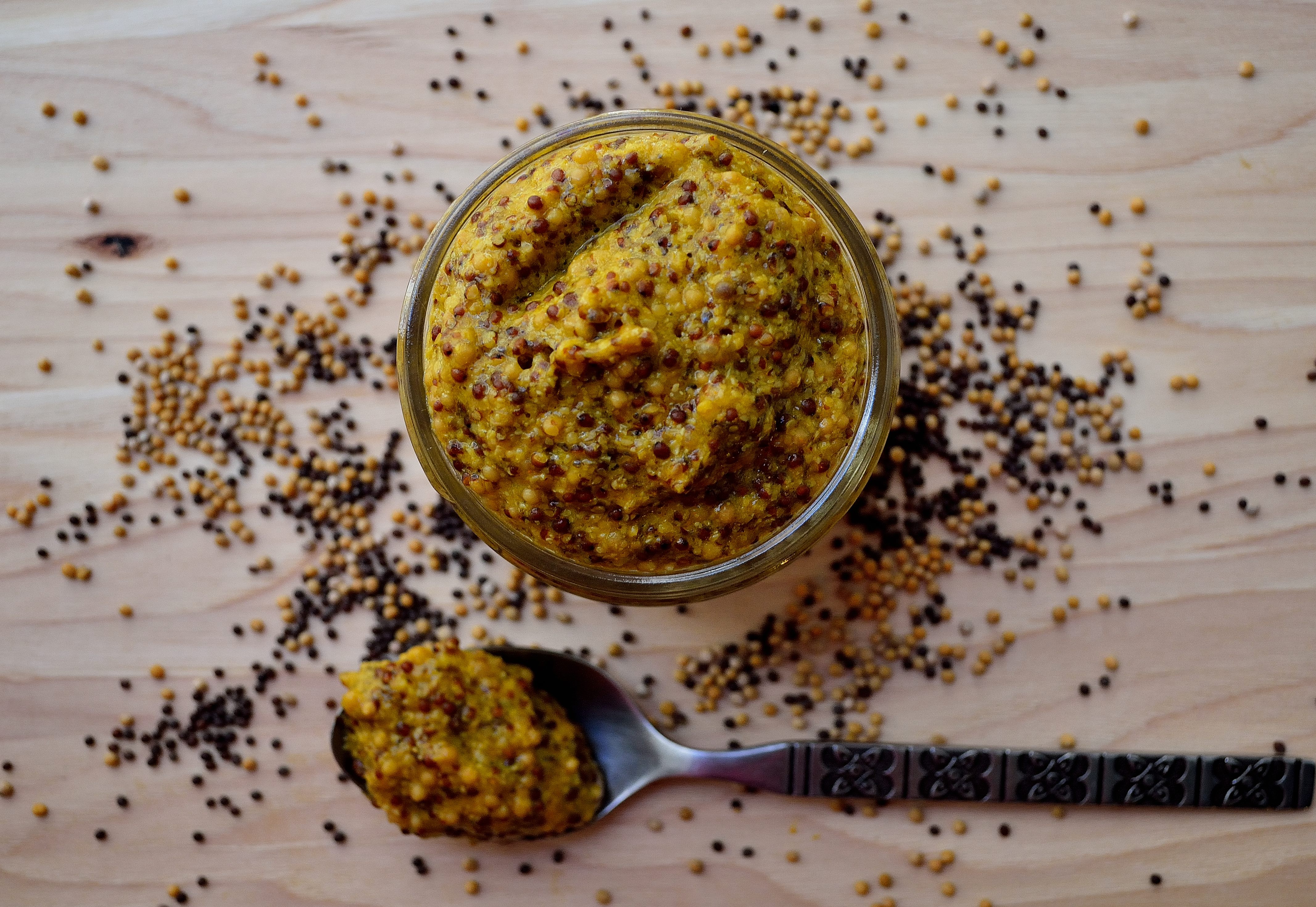Mustard, a versatile condiment beloved by many cultures, adds depth, tanginess, and complexity to dishes. Among its variations, whole grain mustard stands out for its distinctive texture and robust flavor profile. In this comprehensive guide, we’ll explore the myriad ways to harness the full potential of whole grain mustard in your culinary adventures.
Whole grain mustard, also known as coarse mustard or stone-ground mustard, distinguishes itself with its characteristic texture and flavor. Unlike its smoother counterparts, whole grain mustard retains intact mustard seeds, offering a delightful crunch and a more pronounced mustard flavor. Typically made from brown or black mustard seeds, vinegar, and various seasonings, this condiment packs a punch that can elevate a wide range of dishes.
Key Characteristics of Whole Grain Mustard:
-
Texture: The coarsely ground mustard seeds provide a unique texture, adding depth and complexity to dishes.
-
Flavor: Whole grain mustard boasts a robust, tangy flavor with subtle hints of spice, making it a versatile addition to both savory and sweet dishes.
-
Versatility: Its versatility allows for creative experimentation in various culinary applications.
From breakfast to dinner and everything in between, whole grain mustard lends itself to an array of culinary creations. Let’s delve into ten innovative ways to incorporate this flavorful condiment into your cooking repertoire:
1. Marinades and Dressings

Flavor Enhancement:
Whole grain mustard contributes a bold and tangy flavor to marinades, which is further enhanced by its unique texture. When combined with other ingredients such as olive oil, garlic, herbs, and citrus juice, the mustard creates a harmonious blend of flavors that infuses the protein with savory goodness. Whether you’re marinating steak, chicken, or tofu, whole grain mustard adds depth and complexity to the dish, elevating its taste to new heights.
Tenderization:
In addition to flavor enhancement, whole grain mustard helps tenderize the protein, resulting in a more succulent and tender end product. The acidity of the mustard works to break down the muscle fibers in the meat, making it more tender and juicy. As a result, marinating with whole grain mustard not only adds flavor but also improves the texture of the cooked protein, ensuring a more enjoyable eating experience.
Versatility:
One of the key advantages of using whole grain mustard in marinades is its versatility. It pairs well with a wide range of proteins, including beef, pork, poultry, seafood, and tofu, making it suitable for various culinary applications. Whether you’re grilling, roasting, or sautéing, whole grain mustard adds depth and complexity to marinades, enhancing the flavor of the dish and delighting your taste buds.
Dressings:
Salad dressings serve as the finishing touch to salads, adding flavor and moisture to fresh greens and vegetables. Whole grain mustard is a versatile ingredient that can be used to create vibrant and flavorful dressings, elevating the taste of salads and enhancing their overall appeal. When combined with vinegar, olive oil, honey, and herbs, the mustard creates a balanced and tangy dressing that complements a wide range of salad ingredients.
Tangy Zing:
One of the defining characteristics of whole grain mustard in dressings is its tangy flavor profile. The mustard adds a refreshing zing to dressings, which helps to cut through the richness of ingredients such as olive oil and cheese. This tangy contrast enhances the overall taste experience, making salads more vibrant and enjoyable.
Texture and Visual Appeal:
In addition to flavor, whole grain mustard also contributes to the texture and visual appeal of dressings. The presence of intact mustard seeds adds a delightful crunch that contrasts with the smoothness of the other ingredients, creating a dynamic mouthfeel. Furthermore, the specks of mustard seeds add visual interest to the dressing, making it more visually appealing when drizzled over salads.
Customization:
One of the advantages of using whole grain mustard in dressings is its versatility and adaptability to different flavor profiles. Depending on your preferences, you can customize the dressing by adjusting the ratio of ingredients or incorporating additional herbs and spices. Whether you prefer a classic vinaigrette or a creamy honey mustard dressing, whole grain mustard serves as a versatile base for creating delicious and flavorful dressings that elevate the taste of your salads.
2. Sandwiches and Wraps

Elevating Flavor Profiles:
Whole grain mustard serves as a flavor powerhouse when incorporated into sandwiches and wraps. Its robust and tangy taste adds a distinctive depth that enhances the overall flavor profile of the dish. Unlike traditional smooth mustard, the coarse texture of whole grain mustard provides a satisfying crunch with every bite, elevating the eating experience.
Complementing Ingredients:
One of the key strengths of whole grain mustard in sandwiches and wraps is its ability to complement a wide range of ingredients. Whether you’re crafting a classic deli sandwich or a vegetarian wrap, whole grain mustard pairs seamlessly with various fillings. From sliced meats and cheeses to crisp vegetables and flavorful spreads, the tanginess of the mustard cuts through richness and adds a delightful contrast of flavors and textures.
Adding Complexity:
Beyond its role as a condiment, whole grain mustard contributes to the complexity of sandwiches and wraps. Its nuanced flavor profile, characterized by hints of spice and acidity, enhances the overall taste experience. Whether used as a spread on bread or as a dressing for wraps, whole grain mustard adds depth and dimension, transforming ordinary sandwiches into culinary delights.
Creating Contrast:
Whole grain mustard also plays a crucial role in creating balance and contrast within sandwiches and wraps. Its tangy flavor provides a refreshing counterpoint to savory ingredients such as meats and cheeses, preventing the dish from feeling overly heavy or one-dimensional. Additionally, the texture of the mustard seeds adds a satisfying crunch that complements soft fillings, creating a dynamic mouthfeel.
Enhancing Texture:
In addition to its flavor contributions, the texture of whole grain mustard adds another dimension to sandwiches and wraps. The presence of intact mustard seeds provides a delightful crunch that contrasts with the softness of bread or tortillas, creating a textural interplay that enhances the overall eating experience. This unique texture not only adds interest to the dish but also contributes to its visual appeal.
Versatile Pairings:
One of the greatest strengths of whole grain mustard in sandwiches and wraps is its versatility in pairing with a wide range of ingredients. Whether you’re crafting a classic ham and cheese sandwich or a Mediterranean-inspired veggie wrap, whole grain mustard complements a variety of flavor profiles and culinary styles. Its bold and tangy taste can enhance everything from grilled chicken and roasted vegetables to smoked salmon and avocado.
3. Dips and Spreads

Versatility in Flavor Profiles:
Whole grain mustard brings a unique tanginess and texture to dips and spreads, making it a versatile ingredient for creating a wide range of flavor profiles. Whether you’re aiming for a creamy, savory dip or a bold, zesty spread, the addition of whole grain mustard adds depth and complexity to the final product. Its robust flavor pairs well with various herbs, spices, and complementary ingredients, allowing for endless possibilities in flavor combinations.
Creamy Texture and Mouthfeel:
When incorporated into dips and spreads, whole grain mustard contributes to the overall texture and mouthfeel of the dish. Its coarse texture adds a satisfying crunch, while its tangy flavor provides a refreshing contrast to creamy bases such as cream cheese, yogurt, or mayonnaise. This combination of textures and flavors creates a dynamic eating experience that keeps taste buds intrigued and satisfied with every bite.
Flavor Enhancement:
Whole grain mustard serves as a flavor enhancer in dips and spreads, elevating the taste profile with its bold and tangy notes. Whether used as the star ingredient or as a supporting player, the mustard adds depth and complexity to the dish, making it more vibrant and appealing. Its tangy kick cuts through the richness of creamy bases, balancing out the flavors and preventing the dip or spread from feeling overly heavy.
Pairing Possibilities:
One of the key strengths of whole grain mustard in dips and spreads is its ability to pair with a wide range of ingredients. From cheeses and cured meats to fresh herbs and vegetables, the mustard complements a variety of flavors and textures, making it a versatile choice for any occasion. Whether you’re serving it as an appetizer, snack, or accompaniment to a main course, whole grain mustard adds a pop of flavor that enhances the overall dining experience.
Customization and Creativity:
Dips and spreads featuring whole grain mustard offer ample opportunities for customization and creativity. Home cooks can experiment with different ingredients, proportions, and flavor combinations to tailor the dip or spread to their preferences. Whether you prefer a classic combination like whole grain mustard with cream cheese and herbs or a more adventurous pairing like mustard with caramelized onions and bacon, the possibilities are endless.
Serving Suggestions:
Whole grain mustard dips and spreads can be served in a variety of ways, depending on the occasion and personal preference. They make excellent appetizers when paired with crackers, breadsticks, or vegetable crudités, offering guests a flavorful and satisfying start to the meal. Additionally, they can be used as toppings or fillings for sandwiches, wraps, burgers, or grilled meats, adding an extra layer of flavor and excitement to the dish.
4. Grilled Meats and Seafood
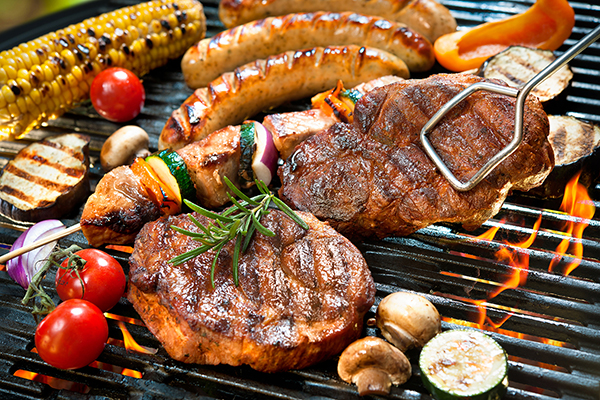
Flavor Infusion:
Whole grain mustard serves as an excellent flavor infuser when used as a glaze or marinade for grilled meats and seafood. Its robust and tangy taste permeates the protein, infusing it with depth and complexity. Whether you’re grilling steak, chicken, fish, or shrimp, incorporating whole grain mustard into the marinade or glaze adds a unique flavor profile that elevates the dish to new heights.
Caramelization and Texture:
When brushed onto meats and seafood during the grilling process, whole grain mustard caramelizes beautifully, creating a savory crust that adds depth of flavor and texture. The mustard’s coarse texture adds a delightful crunch, enhancing the overall eating experience. Whether you’re grilling a steak to perfection or charring shrimp on skewers, the addition of whole grain mustard ensures a mouthwatering result with a perfect balance of flavors and textures.
Versatility in Pairings:
Whole grain mustard pairs well with a variety of meats and seafood, making it a versatile ingredient for grilling. Its tangy flavor complements the rich and savory taste of beef, pork, and lamb, while its robustness stands up to the delicate sweetness of seafood such as salmon, tuna, and scallops. Whether you’re grilling burgers, kebabs, or fillets, whole grain mustard adds a flavorful twist that enhances the natural taste of the protein.
Balancing Richness:
One of the key benefits of using whole grain mustard in grilling is its ability to balance the richness of meats and seafood. The mustard’s tanginess cuts through the fatty flavors, providing a refreshing contrast that prevents the dish from feeling heavy or overwhelming. Whether you’re indulging in a juicy steak or succulent grilled salmon, the addition of whole grain mustard adds a bright and zesty note that keeps the palate refreshed and satisfied.
Creative Applications:
In addition to traditional grilling techniques, whole grain mustard opens up opportunities for creative experimentation in the kitchen. Consider incorporating it into homemade barbecue sauces, marinades, or spice rubs to add depth and complexity to your grilled dishes. You can also use it as a dipping sauce or condiment alongside grilled meats and seafood, allowing guests to customize their dining experience and savor the bold flavors of whole grain mustard.
Serving Suggestions:
Grilled meats and seafood featuring whole grain mustard can be served in a variety of ways to suit different occasions and preferences. Whether you’re hosting a backyard barbecue, family dinner, or intimate gathering, these dishes are sure to impress. Pair grilled steaks with roasted vegetables and a dollop of whole grain mustard sauce, or serve grilled shrimp skewers with a side of tangy mustard aioli for dipping. The possibilities are endless, and the result is always delicious.
5. Roasted Vegetables

Flavor Enhancement:
Whole grain mustard contributes a bold and tangy flavor to roasted vegetables, enhancing their taste profile with its robust notes. When tossed with vegetables before roasting, the mustard coats each piece, infusing it with savory goodness that complements the natural sweetness of the vegetables. Whether you’re roasting carrots, potatoes, Brussels sprouts, or cauliflower, the addition of whole grain mustard adds a delightful complexity to the dish.
Textural Contrast:
The coarse texture of whole grain mustard adds a satisfying crunch to roasted vegetables, creating a dynamic contrast with their tender and caramelized exterior. As the vegetables roast in the oven, the mustard seeds become toasted and crisp, adding an extra layer of texture that enhances the overall eating experience. Whether you’re serving roasted vegetables as a side dish or incorporating them into salads or grain bowls, the addition of whole grain mustard ensures a satisfying crunch with every bite.
Versatility in Pairings:
Whole grain mustard pairs well with a variety of vegetables, making it a versatile ingredient for roasting. Its tangy flavor complements the earthy taste of root vegetables such as carrots, parsnips, and potatoes, while its robustness stands up to the bitterness of Brussels sprouts and cauliflower. Whether you’re roasting a medley of vegetables or focusing on a single variety, whole grain mustard adds depth and complexity to the dish, making it more vibrant and flavorful.
Balancing Sweetness:
Roasted vegetables often develop a natural sweetness as they caramelize in the oven. Whole grain mustard provides a welcome contrast to this sweetness with its tangy and slightly spicy flavor profile. The mustard’s acidity helps to balance the sweetness of the vegetables, preventing the dish from becoming overly cloying. Whether you’re roasting sweet potatoes, butternut squash, or beets, the addition of whole grain mustard adds a bright and refreshing note that enhances the overall taste experience.
Creative Seasoning:
In addition to its flavor-enhancing properties, whole grain mustard offers opportunities for creative seasoning in roasted vegetables. Consider mixing the mustard with olive oil, garlic, herbs, and spices to create a flavorful marinade or seasoning blend. Toss the vegetables in this mixture before roasting to ensure even distribution of flavor and seasoning. Whether you’re craving classic roasted potatoes or experimenting with a Mediterranean-inspired vegetable medley, whole grain mustard adds a delicious twist that elevates the dish to new heights.
Serving Suggestions:
Roasted vegetables featuring whole grain mustard can be served in a variety of ways to suit different occasions and preferences. Serve them as a side dish alongside grilled meats or roasted poultry, or incorporate them into salads, grain bowls, or wraps for a nutritious and flavorful meal. Garnish with fresh herbs, toasted nuts, or grated cheese for added flavor and visual appeal. Whether you’re hosting a dinner party or enjoying a cozy meal at home, roasted vegetables with whole grain mustard are sure to impress.
6. Stews and Braises
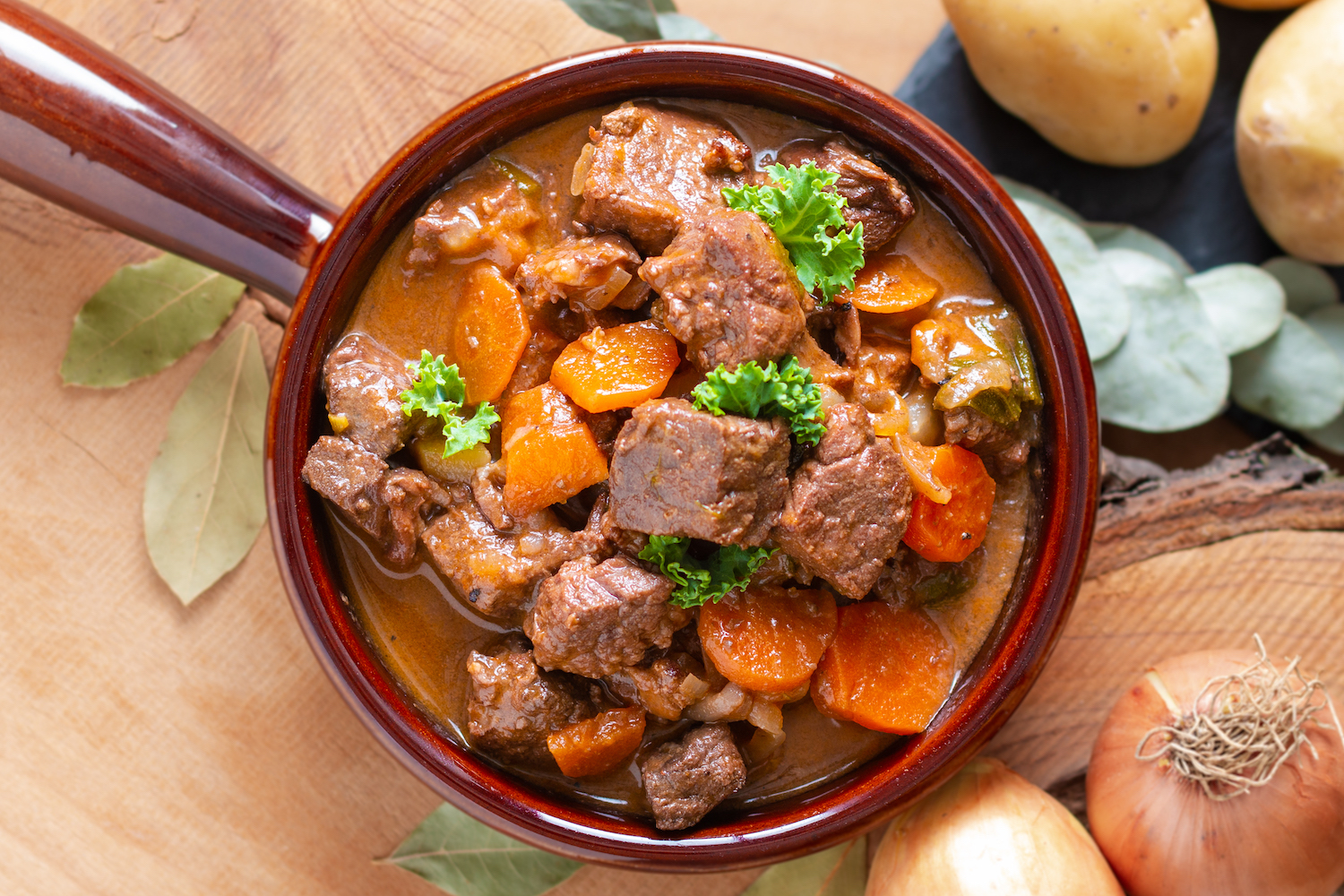
Flavor Enrichment:
Whole grain mustard adds depth and complexity to stews and braises with its bold, tangy flavor profile. Whether you’re cooking beef, chicken, pork, or vegetables, incorporating whole grain mustard into the recipe infuses the dish with layers of savory goodness. As the stew or braise simmers low and slow, the mustard melds with the other ingredients, intensifying their flavors and creating a rich and satisfying dish.
Tangy Counterbalance:
Stews and braises often feature rich and hearty ingredients that can benefit from a tangy counterbalance. Whole grain mustard provides exactly that, with its bright and zesty flavor cutting through the richness of meats, root vegetables, and hearty sauces. The mustard’s acidity helps balance the dish, preventing it from feeling overly heavy and adding a refreshing contrast that keeps the palate engaged.
Tenderization and Moisture Retention:
The acidity in whole grain mustard serves as a natural tenderizer for meats, helping break down tough fibers and resulting in tender, melt-in-your-mouth proteins. When used in braising liquids or added to stews, the mustard helps maintain moisture levels, ensuring that meats remain juicy and succulent throughout the cooking process. This combination of tenderization and moisture retention yields a final dish that is both flavorful and incredibly tender.
Depth of Flavor:
Whole grain mustard contributes to the overall depth of flavor in stews and braises, adding complexity and nuance to the dish. Its robust taste pairs well with the earthy flavors of root vegetables, the umami richness of meats, and the aromatic spices often found in braising liquids. Whether you’re cooking a classic beef stew, a hearty chicken braise, or a vegetarian lentil stew, the addition of whole grain mustard elevates the dish to new heights, transforming it into a culinary masterpiece.
Creative Experimentation:
Stews and braises provide ample opportunities for creative experimentation with whole grain mustard. Consider incorporating the mustard into the base of the dish, adding it to the braising liquid, or stirring it into the sauce just before serving. You can also use whole grain mustard as a finishing touch, dolloping it on top of individual servings for an extra burst of flavor. With its versatility and bold flavor, whole grain mustard allows for endless possibilities in culinary creativity.
Serving Suggestions:
Stews and braises featuring whole grain mustard are best served piping hot, straight from the pot or Dutch oven. Garnish with fresh herbs, a dollop of sour cream or Greek yogurt, or a sprinkling of toasted breadcrumbs for added texture and visual appeal. Serve alongside crusty bread, mashed potatoes, or rice to soak up the flavorful sauce and juices. Whether you’re enjoying a cozy meal at home or entertaining guests, whole grain mustard-infused stews and braises are sure to satisfy and impress.
7. Sauces and Gravies
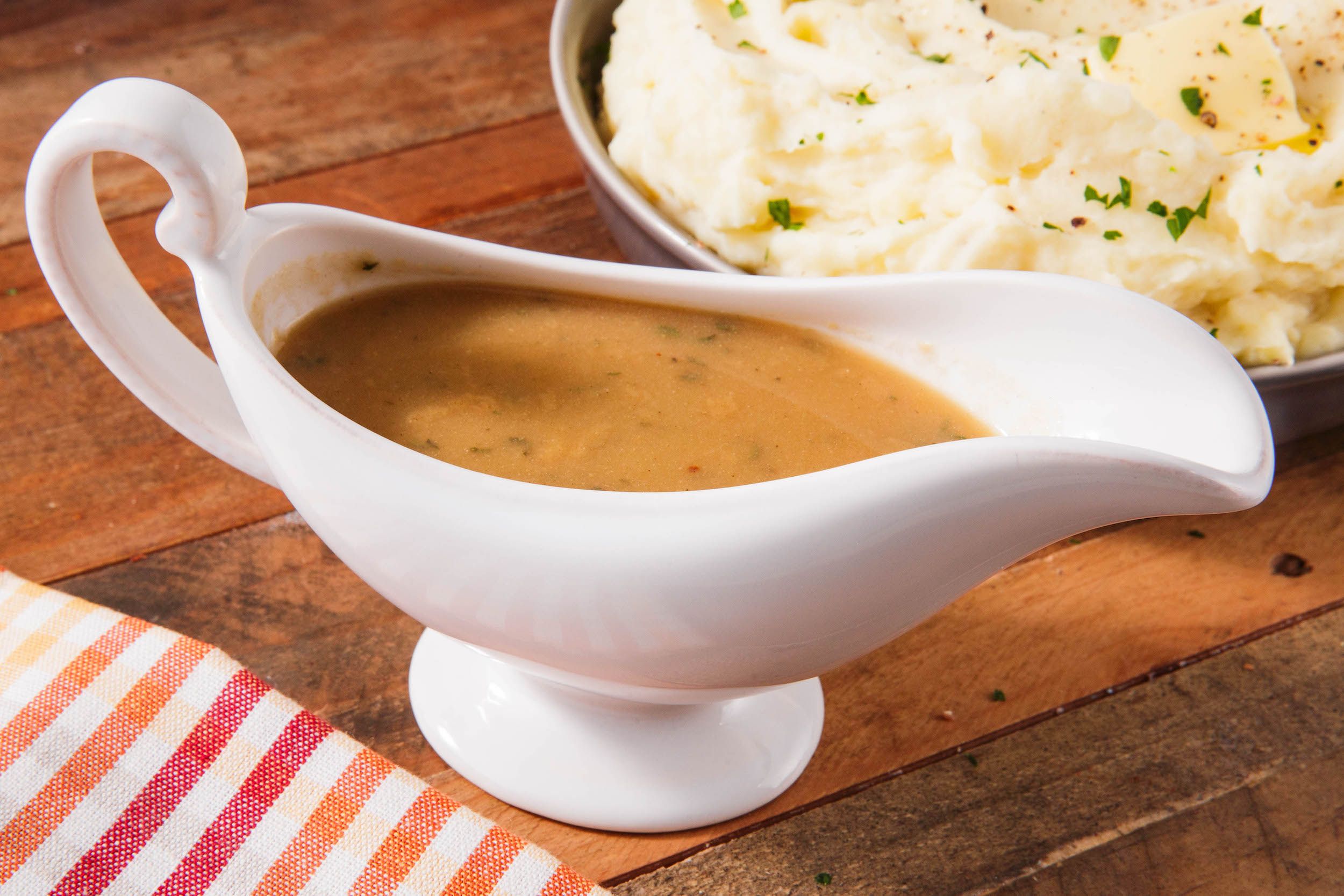
Flavor Enhancement:
Whole grain mustard serves as a flavor enhancer in sauces and gravies, imparting its bold and tangy taste to the dish. Whether used as a base ingredient or stirred in as a finishing touch, the mustard adds depth and complexity that elevate the overall flavor profile. Its robust flavor pairs well with a variety of ingredients, enhancing both savory and sweet sauces with its distinctive taste.
Complexity and Depth:
Incorporating whole grain mustard into sauces and gravies adds layers of complexity and depth to the dish. The mustard’s tanginess complements the richness of the sauce, balancing out flavors and preventing the dish from feeling one-dimensional. Whether you’re making a creamy cheese sauce, a savory pan gravy, or a tangy barbecue sauce, the addition of whole grain mustard adds a welcome depth that enhances the overall dining experience.
Tangy Contrast:
One of the key benefits of using whole grain mustard in sauces and gravies is its ability to provide a tangy contrast to rich and savory flavors. The mustard’s acidity cuts through the richness of ingredients such as butter, cream, and meat drippings, adding a refreshing zing that keeps the palate engaged. Whether you’re serving it alongside roasted meats, grilled vegetables, or mashed potatoes, the addition of whole grain mustard adds a bright and lively note to the dish.
Thickening and Binding:
Whole grain mustard can also serve as a thickening agent and binding agent in sauces and gravies. Its natural emulsifying properties help create a smooth and velvety texture, while its coarse texture adds a satisfying crunch. Whether you’re thickening a pan sauce or binding ingredients in a creamy gravy, the addition of whole grain mustard helps achieve the desired consistency and texture, resulting in a sauce that coats every bite with deliciousness.
Creative Versatility:
Sauces and gravies featuring whole grain mustard offer ample opportunities for creative experimentation in the kitchen. Home cooks can customize the flavor profile by adjusting the ratio of mustard to other ingredients, or by incorporating additional herbs, spices, and seasonings. Whether you prefer a classic Dijon mustard sauce or a bold honey mustard glaze, the versatility of whole grain mustard allows for endless possibilities in culinary creativity.
Serving Suggestions:
Sauces and gravies featuring whole grain mustard can be served alongside a variety of dishes to enhance their flavor and appeal. Drizzle mustard-infused gravy over roasted meats or mashed potatoes, or serve mustard-based sauces alongside grilled chicken or fish. Garnish with fresh herbs, cracked black pepper, or a sprinkle of grated cheese for added flavor and visual appeal. Whether you’re hosting a formal dinner party or enjoying a casual meal at home, sauces and gravies featuring whole grain mustard are sure to impress.
8. Baking and Cooking
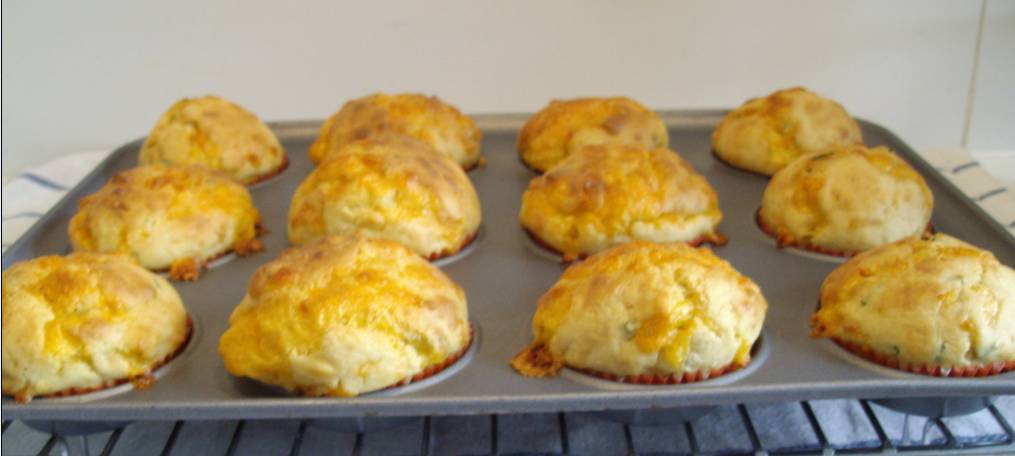
Savory Baking:
Whole grain mustard can add a unique depth of flavor to savory baked goods. Incorporate it into bread dough or pastry fillings to create a surprising twist that complements other savory ingredients like cheese, herbs, and cured meats. Whether you’re making bread rolls, savory tarts, or stuffed pastries, the addition of whole grain mustard can elevate your baked creations to new heights of deliciousness.
Flavorful Coatings:
Use whole grain mustard as a flavorful coating for meats, poultry, or vegetables before baking or roasting. The mustard adds a tangy kick and helps seasonings adhere to the surface, resulting in a flavorful crust that enhances the overall taste experience. Whether you’re making mustard-glazed chicken thighs, roasted vegetables with a mustard crust, or herb-crusted pork tenderloin, whole grain mustard can take your baked dishes to the next level.
Marinades and Glazes:
Incorporating whole grain mustard into marinades and glazes can infuse baked dishes with depth, complexity, and a hint of tanginess. Marinate proteins like chicken, pork, or tofu in a mixture of whole grain mustard, herbs, and spices before baking to enhance their flavor and juiciness. Similarly, brush a mustard-based glaze over baked goods like ham, salmon, or meatloaf during the cooking process to add a caramelized crust and irresistible flavor.
Creamy Sauces and Fillings:
Whole grain mustard can add a surprising depth of flavor to creamy sauces and fillings in baked dishes. Stir it into cheese sauces for macaroni and cheese or au gratin potatoes, or incorporate it into creamy fillings for savory pies or quiches. The mustard’s tangy flavor complements the richness of the dairy, adding a delicious contrast that elevates the dish to gourmet status.
Sweet and Savory Pairings:
Experiment with combining whole grain mustard with sweet ingredients in baked goods for a delightful flavor contrast. Pair it with honey, maple syrup, or brown sugar to create a sweet and tangy glaze for baked ham or chicken. Alternatively, incorporate it into savory-sweet recipes like mustard and herb scones, bacon and cheddar muffins, or honey mustard glazed carrots for a unique and delicious twist.
9. Egg Dishes

Scrambled Eggs and Omelets:
Incorporating whole grain mustard into scrambled eggs or omelets adds a burst of flavor that elevates these classic dishes. Simply whisk a spoonful of mustard into the beaten eggs before cooking to infuse them with tanginess and depth. The mustard’s robust flavor complements the creaminess of the eggs, creating a savory and satisfying breakfast experience.
Egg Sandwiches and Wraps:
A swipe of whole grain mustard can be the secret ingredient that transforms an ordinary egg sandwich or wrap into a flavor-packed delight. Spread mustard onto bread or tortillas before adding scrambled or fried eggs, along with your favorite toppings like cheese, bacon, or avocado. The mustard adds a tangy kick that cuts through the richness of the other ingredients, creating a perfectly balanced and delicious meal.
Deviled Eggs and Egg Salads:
Whole grain mustard can add an unexpected twist to classic recipes like deviled eggs or egg salad. Mix a dollop of mustard into the filling for deviled eggs, along with mayonnaise, herbs, and spices, for a tangy and flavorful appetizer. Similarly, incorporate mustard into egg salad along with chopped celery, onion, and seasonings for a zesty and satisfying lunch option.
Quiches and Frittatas:
Whole grain mustard can be used to add depth of flavor to savory egg dishes like quiches and frittatas. Stir mustard into the egg mixture before pouring it into the pie crust or skillet, along with other ingredients like cheese, vegetables, and herbs. The mustard’s tanginess cuts through the richness of the eggs and cheese, adding complexity and balance to the dish.
Baked Eggs and Casseroles:
Incorporate whole grain mustard into baked egg dishes and casseroles for an extra layer of flavor. Mix mustard into the egg mixture before baking, or drizzle it over the top of the dish for added zing. Whether you’re making a breakfast casserole with eggs, sausage, and cheese, or baked eggs with spinach and tomatoes, the addition of mustard adds a savory kick that enhances the overall taste experience.
10. Dressings for Roasts

Flavor Infusion:
Whole grain mustard can infuse roasts with a rich and tangy flavor that penetrates the meat during the cooking process. Whether you’re roasting beef, pork, lamb, or poultry, incorporating mustard into the dressing adds depth and complexity to the dish. The mustard’s bold taste complements the savory flavors of the meat, creating a harmonious blend of flavors that tantalizes the taste buds.
Moisture Retention:
Dressings containing whole grain mustard can help seal in moisture and prevent roasts from drying out during cooking. The mustard acts as a natural emulsifier, binding the ingredients together and forming a flavorful coating that locks in juices. As the roast cooks, the dressing keeps the meat moist and tender, resulting in a succulent and flavorful dish that is sure to impress.
Crisp and Flavorful Crust:
When used as part of a dressing or marinade, whole grain mustard can help create a crisp and flavorful crust on the exterior of the roast. The mustard’s coarse texture adds a delightful crunch, while its tangy flavor enhances the overall taste experience. Whether you’re roasting a whole chicken, a rack of lamb, or a pork loin, the addition of mustard to the dressing ensures that the exterior of the meat is golden brown and deliciously crispy.
Versatile Pairings:
Whole grain mustard pairs well with a variety of herbs, spices, and aromatics, making it a versatile ingredient for roast dressings. Whether you prefer classic combinations like mustard and rosemary or more adventurous pairings like mustard and thyme, the possibilities are endless. Experiment with different flavor profiles to create dressings that complement your favorite cuts of meat and enhance their natural flavors.
Creative Experimentation:
Roast dressings featuring whole grain mustard offer plenty of opportunities for creative experimentation in the kitchen. Mix and match ingredients like mustard, olive oil, garlic, herbs, and citrus to create unique flavor combinations that suit your taste preferences. Whether you’re making a simple mustard and herb dressing or a more complex mustard and honey glaze, the key is to let your creativity shine and have fun with the process.
Serving Suggestions:
Serve roasts dressed with whole grain mustard alongside your favorite side dishes for a delicious and satisfying meal. Whether you’re serving roast beef with roasted vegetables, roast pork with mashed potatoes, or roast chicken with a fresh salad, the mustard-infused dressing adds a flavorful finishing touch that ties the meal together. Garnish with fresh herbs or a drizzle of extra dressing for added visual appeal.
Conclusion
Whole grain mustard is a culinary powerhouse that can transform ordinary dishes into extraordinary culinary experiences. Whether used as a marinade, spread, glaze, or dip, its distinctive texture and robust flavor elevate a wide range of recipes across cuisines. By incorporating whole grain mustard into your cooking repertoire, you unlock a world of flavor possibilities that are sure to impress your family and guests alike. So, next time you reach for a jar of mustard, consider embracing the unique charm of whole grain mustard and let your creativity soar in the kitchen.

